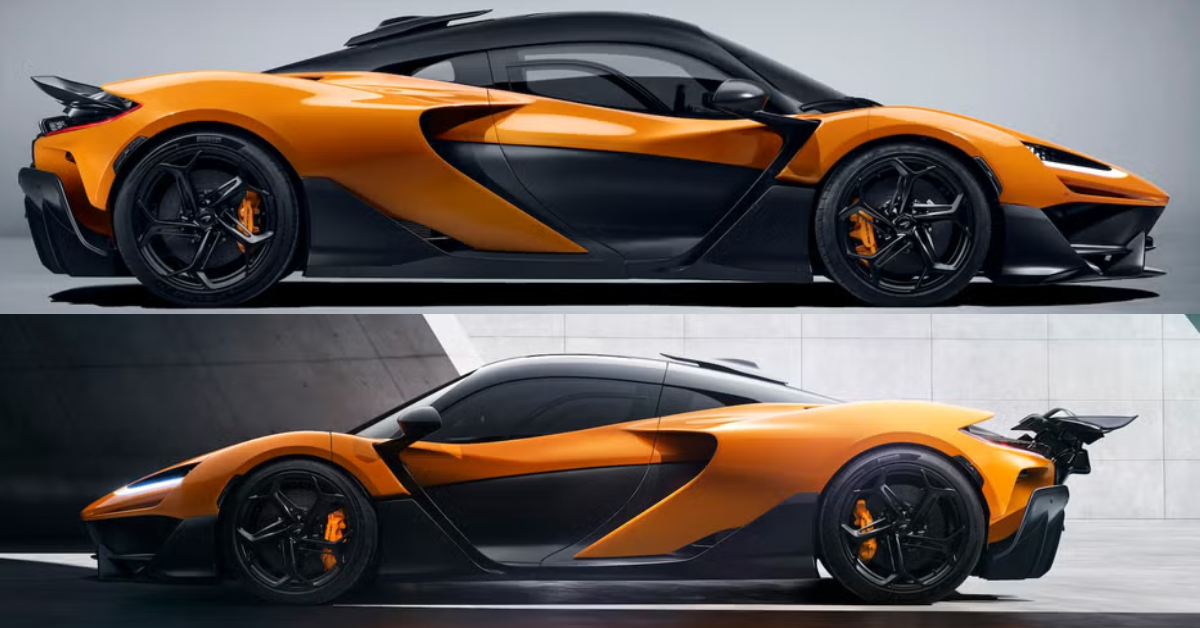McLaren has unveiled its latest hypercar, the 2026 McLaren W1, as a worthy successor to the legendary F1 and P1 models. This new car, powered by a plug-in hybrid V-8, boasts a jaw-dropping 1258 horsepower. It now stands as the most powerful McLaren ever made. However, the W1 is an exclusive model, limited to only 399 units, all of which have already been sold.
Aerodynamic Innovations and Race Mode
McLaren designed the W1 with advanced aerodynamics inspired by Formula 1 technology. The car features a rear wing that extends 11.8 inches, providing up to 2205 pounds of downforce. When Race mode is activated, the W1 lowers its front suspension by 1.5 inches and its rear by 0.7 inch. This change enhances its stability and handling at high speeds.
The W1 weighs around 3300 pounds in its lightest form, giving it a best-in-class power-to-weight ratio. McLaren prioritized weight reduction, using cutting-edge materials and techniques to optimize performance. As a result, this hypercar is built for both road and track use.
Powertrain: A New Plug-In-Hybrid V-8
At the heart of the W1 is a twin-turbo 4.0-liter V-8 engine, a new addition to McLaren’s lineup. This engine has a flat-plane crank design and can rev up to 9200 rpm. On its own, it produces 916 horsepower. However, the car also features a 342-hp radial-flux electric motor. Together, they generate an incredible 1258 horsepower and 988 pound-feet of torque.
All this power goes to the rear wheels through an eight-speed dual-clutch automatic transmission and an electronically controlled differential. The W1 does not include an all-wheel-drive system. It can accelerate from 0 to 60 mph in just 2.7 seconds. McLaren claims the car can reach a top speed of 217 mph. For comparison, the 671-hp McLaren Artura hits 60 mph in 2.6 seconds, showing the W1’s massive power and aerodynamics in action.
Battery and Hybrid System
The W1 uses a small 1.4-kWh battery to power its electric motor. With the Level 2 onboard charger, the battery can reach 80% in just 22 minutes. Although its electric-only range is only about two miles, the car’s focus is on maximum acceleration. To further reduce weight, McLaren eliminated the traditional alternator and starter motor. The hybrid system’s electric motor now handles those functions.
Chassis and Suspension: Built for High Performance
McLaren extensively used carbon fiber in the W1’s construction, helping keep its weight down. The car features Race Active Chassis Control III, an active suspension system with three modes: Comfort, Sport, and Race. Each mode adjusts suspension stiffness and steering feel to match different driving conditions.
The front suspension includes titanium bars and 3-D-printed control arms. These components save weight without sacrificing strength. The rear suspension features an active heave bar for precise control. Stopping power comes from 15.4-inch carbon-ceramic brake rotors. The front brakes use six-piston calipers, while the rear brakes use four-piston units. The car rides on 19-inch front and 20-inch rear wheels, wrapped in Pirelli P Zero R tires. Drivers can swap them for Trofeo RS rubber for enhanced grip on the track.
Track-Focused Features and Driving Modes
While the W1 is street-legal, it was developed with track performance in mind. During testing, it lapped the Nardo circuit three seconds faster than the McLaren Senna. In Race mode, drivers can select between two powertrain settings: GP and Sprint. Sprint delivers maximum performance from the electric motor for one lap, ideal for qualifying runs. On the other hand, GP mode balances power deployment and recovery for consistent performance over a race’s duration.
The W1’s steering wheel, inspired by racing designs, includes two buttons. One button boosts acceleration for short bursts, while the other adjusts the rear wing to reduce drag.
Interior: Minimalist Yet Versatile
The two-seat cockpit of the W1 is minimalist but functional. The seats are fixed, yet the driver can adjust the pedals for a customized fit. The interior features InnoKnit, a lightweight upholstery material available in various colors and textures. McLaren’s MSO (McLaren Special Operations) program allows buyers to further personalize their vehicles.
A 8.0-inch touchscreen sits on the dashboard and includes Apple CarPlay. For device connectivity, both USB-C and USB-A ports are available. McLaren also offers an optional Bowers & Wilkins stereo system for those who want a high-end audio experience. Behind the seats, a four-cubic-foot luggage shelf provides enough room for two weekend bags or racing helmets.
Exclusivity and Pricing
McLaren will produce just 399 units of the W1, emphasizing its exclusivity. Each unit has a base price of $2.1 million, but buyers will likely spend more on customizations through the MSO program. The car’s high price reflects its performance, technology, and rarity. For collectors and enthusiasts, the W1 offers a unique blend of cutting-edge engineering and extreme power.
Conclusion
The 2026 McLaren W1 represents the pinnacle of McLaren’s engineering prowess. With its plug-in-hybrid V-8 engine, Formula 1-inspired aerodynamics, and track-focused design, it sets a new standard in the hypercar world. Though its production is limited, the W1 is poised to leave a lasting impact, much like its predecessors—the F1 and P1.
FAQs
How much power does the McLaren W1 produce?
It generates 1258 horsepower and 988 pound-feet of torque from its hybrid powertrain.
What is the W1’s top speed?
The car can reach a top speed of 217 mph.
How many units of the W1 will McLaren produce?
McLaren will build only 399 units, and all of them are already sold.
What makes the W1’s aerodynamics special?
It features a rear wing that extends 11.8 inches, creating up to 2205 pounds of downforce and enhancing stability.
What is the base price of the McLaren W1?
The starting price is $2.1 million, with additional customization options available through the MSO program.








